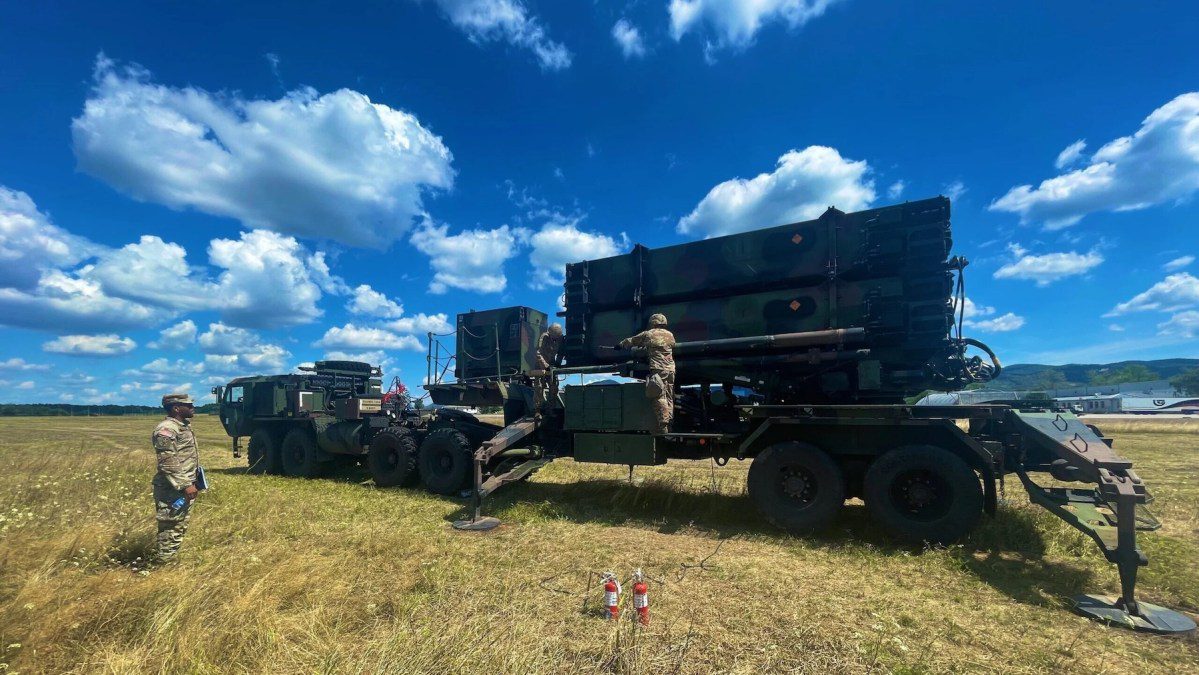Global Courant 2023-05-08 23:18:15
Ukraine claims it shot down a Kinzhal hypersonic missile over Kiev on the night of May 4. The claim was dutifully reported by the Ukrainian propaganda mill, then major Western news outlets reported the shooting as fact.
The Ukrainians helpfully provided some photographs purporting to show the forward part of the Kinzhal after being hit.
Photo of allegedly downed Kinzhal missile and close-in photo of where it was supposedly hit. Note: The photo of the downed “Kinzhal” missile looks staged and differs from known images of the front part of the Kinzhal. Photo: Defense Express
According to Kiev, the Ukrainians used their brand new US supplied Patriot air defense system, firing a single shot that knocked down the Kinzhal. However, it is unlikely that a Kinzahl hypersonic missile was shot down by the US-supplied Patriot air defense system.
It should be noted that Patriot air defense systems have a mixed to poor record of successful interceptions of ballistic missiles. The failures include being unable to stop Iranian ballistic missiles fired by Yemen aimed at Saudi Arabia and the UAE from hitting their targets.
You would have expected that the bigwigs of the US Air Force and the Pentagon, hearing the news, would have danced a little dance. But in fact, although the That reports the New York Times that three unnamed U.S. officials “confirmed” the shooting of Ukraine, no U.S. official has officially declared his support for the Ukrainians.
They said it couldn’t
While the Pentagon was convinced there was no contemporary air defense system that could take out a hypersonic missile, the Ukrainians claim to have proven it was possible. Did they?
We don’t know much about the Patriot battery handed over to Ukraine, except that it was drawn from an active US Air Force unit by presidential order. The Air Force has a total of fifteen Patriot units, but many of them are deployed abroad. There is no information that any unit operating abroad has been sent to Ukraine. In 2021 the Biden administration drew U.S. Patriot units from Saudi Arabia and the UAE. One of these units may have been sent to Ukraine.
If the unit shipped was a PAC-3 model, we don’t know if it has been modernized. The Air Force has been adapt and upgrade slowly PAC-3 Patriots, but whether Ukraine received PAC-3s in any of the latest upgraded models is unknown. The upgrades include improvements to the system’s computers, switching from analog components to digital, and improving the system’s radar.
Improved or not, the Patriot system being delivered to Ukraine would require U.S. Air Force personnel or contractors Raytheon to support the unit, as training some soldiers to operate and fire a system does not equip them to perform diagnostics and maintenance.
Some say the Patriot system sent to Ukraine is older PAC-2 model. Again, the Biden administration has not provided information on the model Patriot sent to Kiev, but some of the units pulled from Saudi Arabia and the UAE were likely PAC-2.
The PAC-2 interceptors fly much slower than the interceptor missiles on the PAC-3.
The Patriots were delivered to Ukraine to shoot down cruise missiles, slide bombs and kamikaze drones. No one ever said it was placed in Ukraine to deal with Kinzhal or other hypersonic threats.
We also do not know which interceptor missiles were sent to Ukraine for the Patriot. Interceptor missiles for Ukraine are in very short supply and some US customers are struggling to get replacement missiles. The United States tried to help Saudi Arabia by trying to scrounge up “spare missiles” from other US customers, suggesting that there are no spare missiles in the Air Force’s inventory.
The latest version of the PAC-3 missile is called the MIM-104F. It has a Ka band active radar on board and a “hit to kill” package. Hit to kill is designed to hit and shatter an enemy missile or aircraft. Unlike blast-fragmentation warheads that can emit thousands of lethal pellets using a proximity fuze, the MIM-104F relies primarily on its hit-to-kill capability, though it carries a small extra-explosive warhead, a lethality enhancer.
If a kinetic killing device had hit the Kinzhal, it would have broken the Kinzhal into a thousand pieces. If the lethality booster had gone off it might have knocked the Kinzhal down, but the Kinzhal that fell would be riddled with small tears and holes.
Under the belly of a Russian Aerospace Forces MiG-31 is a Kinzhal hypersonic aeroballistic missile with a small radar signature and high maneuverability. Photo: Ministry of Defense of the Russian Federation
The photo provided by Ukraine of the alleged nose section of the Kinzhal with a roundish hole in it is unlikely to have been hit by a kinetic kill or by the missile’s lethality enhancer.
American and European news media suggested that the Kinzhal may not be hypersonic and may therefore have been flung out of the sky. This argument is made to explain how the Patriot was able to kill the Kinzhal. No evidence has been provided for this claim.
The Kinzhal has a solid fuel rocket motor and can be launched from a Tu-22M3 nuclear bomber or a MIG-31 interceptor. When fired from the Tupolev bomber, the Kinzhal has a range of 3,000 km. When fired from a MIG-31, the range is less, about 2,000 km, perhaps due to a less capable built-in radar. The Tu-22M3s are based in the southern and western districts of Russia, putting them within range of Kiev and other Ukrainian targets.
The US has repeatedly said that current generation radars – including even the upgraded Patriot – cannot track hypersonic missiles. A solution is integrating space-based radar with advanced long-range terrestrial radar. Once that’s done, you still have to hope that your interceptor can reach the hypersonic weapon. There is no evidence that the US has deployed a system of space-based sensors with Ukraine’s newly acquired Patriot battery.
Regarding the alleged shooting, the official US position is that the US government supports Ukraine’s claim of a successful Kinzhal shooting, without actually saying that the US can confirm it. This strongly suggests that US personnel supporting the Patriot in Kiev did not report a shooting in Kinzhal.
While the Ukrainian Defense Ministry and government support the story of the shooting down of a Kinzhal, the Ukrainian Air Force said there was not a rocket attack on the night of May 4 when the alleged shooting took place. In fact, the Ukrainians managed to shoot down one of their own drones that same night, though it’s not clear if they were using their new Patriot system. After saying that it did not happen, the Ukrainian Air Force chief has changed his mind and confirmed that a Kinzhal had been shot.
The bottom line is that the Ukrainians need this victory to show the citizens of Kiev that they are protected. So even if the shooting wasn’t real, the announcement served a political purpose.
All this leads to the conclusion that the delivery of the Kinzhal missile is, as the Russians would say, “dezinformatsiya”.
Stephen Bryen is a senior fellow at the Center for Security Policy and the Yorktown Institute.
Similar:
Loading…








